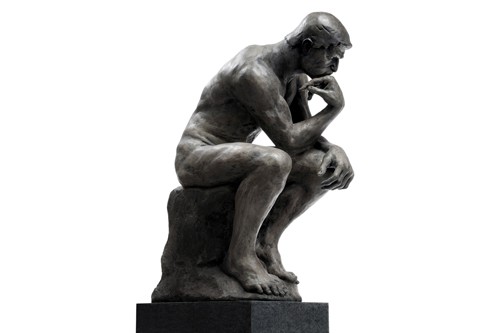
Whether you are launching a new treatment for a condition, or have new data for an existing treatment that changes how it should be used, you are asking for a change to existing behaviour. This means that ways of addressing the challenge have already been considered and approaches to getting the job done are already implemented.
Those approaches may not be completely satisfactory but habits, structures and beliefs that support existing approaches have already been established. Behind the approach and the behaviour associated with it is a decision. The decision has to come before the behaviour or the behaviour would not happen. The decision could be completely subconscious and the individual may not even be aware he has made a decision. Think about driving your normal route to work each day. You are constantly deciding when to accelerate, brake, change gear, check your mirrors. How many of those decisions are conscious rather than subconscious.
Therefore understanding how people currently make decisions is a critical step in defining how to support people in making new decisions that require changes in behaviour. This is where it can all go terribly wrong because what people normally do at this stage is to go and ask people why they do what they do at present. What you then get back is the post-rationalised reasons for those decisions, which are far from the true picture. Through the rest of this article we will explore why this happens and what you can do differently.
There has been a lot of research into decision-making. Some of the most influential work is by Daniel Kahneman who won a Nobel prize in 2002 for his work. He, along with his colleague Amos Tvesky, developed the concept of System 1 and System 2 thinking. System 1 thinking is fast and intuitive; it is the subconscious decision-making while System 2 thinking is slow and deliberate, the conscious decision-making. If you want to find out for yourself the difference between System 1 and System 2 thinking do the exercise in Box 1 with a friend or colleague.
Individuals are not always willing, or able, to fully express what is driving their decision-making
While society holds healthcare professionals to very high standards they, like the rest of us, are human and make decisions using the same processes as all other humans. This explains why in lots of critical situations within healthcare there are set procedures and standard approaches to minimise the vagaries of human decision-making.
Everyday we make somewhere between 23,000-35,000 decisions that allow us to function effectively on a day-to-day basis. The vast majority of these decisions are made subconsciously; in fact a study from Columbia University in 2012 estimated we only make around 70 conscious decisions each day. The remaining decisions are all subconscious decisions. These subconscious decisions are made using System 1 thinking. There is a constant interplay between System 1 and System 2 thinking and the brain is frugal with its cognitive capacity and whereever possible will hand over decision-making to System 1.
Thinking about the exercise in Box 1: No human being could function purely on System 2 thinking, there is just not enough time in a day and it would be exhausting. Similarly, if a physician or other healthcare professional needs to see a patient every 10 or 20 minutes to see all the patients in their clinic, they will use System 1 thinking because System 2 thinking is just too slow and laborious. At this stage it is important to remember that they have accumulated years of hard System 2 thinking, through their training and continued development programmes, to have trained their System 1 thinking to be effective in this setting. Even in situations like multidisciplinary meetings what you fi nd is that you have a group of professionals all applying their own System 1 thinking. Only at the stage where they do not agree will they move to System 2 thinking to resolve the difference of opinion.
Box 1: Exploring System 1 and System 2 thinking
To explore the difference between System 1 and System 2 thinking ask a friend/colleague to accompany you on a short walk. Set the pace for the walk and then ask your friend/colleague to count backwards from 100 in 7s, ie 100, 93, 86, 79 etc.
Now while they do this pay attention to what happens to their walking pace. It is likely they will slow down and some people will even stop walking completely. This is because the task involves System 2 thinking that takes up so much of your cognitive capacity that your brain has to carry out other activities (like walking) more slowly or stop all together.
System 1 thinking, as we mentioned, is fast and subconscious and it is also influenced by the context of individuals. What we mean by context is their social conditioning, their values, their beliefs about themselves, their emotional state, the time of day, their previous experiences that day and many other factors besides. To truly understand System 1 thinking you have to help people unpack their System 1 thinking. It is not enough to ask them to tell you about the last time they made that decision and ask them why. What you will get is their System 2 post-rationalised version of the events that led to and reasons for the decisions. You need to help them place themselves back in that moment when they made the decision. Then you need to help them explore the who, when and why that surround the decision that they made.
You need not only to understand how they describe the patient that they made that decision for. You need to understand what time of day it was, what the circumstances were, ie was it a clinic, was it a ward round, were they alone or with others, who was the patient they had seen previously, were they on time or running late? Etc.
If it is a practice that they exhibit consistently without conscious evaluation then it is even more important to understand how and why that decision process has been so ingrained into their System 1 way of thinking.
This context helps you to understand the heuristic (the mental shorthand) that they use to make System 1 decisions. It allows you to take into consideration factors like decision fatigue and cognitive dissonance.
Even at this stage the focus is functional and you also need to understand the emotional and social elements that surround the decision they made: What do they think their colleagues would think of their decision? How do they want the patient to feel about their decision? And those are just some of the questions you need to ask. Only by unpacking the System 1 decision-making process will you get to understand what is really important and, that, is what insight is, it is the deep understanding of why something is the way that it is.
Always be aware of the drive to post-rationalise a decision that has already been made
Based on these principles, in order to really understand what is driving decision-making, whether it is why physicians are opting for product A over product B or why patient X receives one treatment type and Patient Y another, you need to uncover the System 1 thinking involved and understand the interplay between System 1 and System 2 thinking.
So often the standard types of questions asked in market research mean that at the very best the only insight that can be delivered is an understanding of the physician’s post-rationalisation of why they prefer product A over B. The real reason behind their decision remains elusive – hidden from view.
Box 2: Push and Pull factors in decision-making and changes in behaviour
When we are exploring what it takes for someone to change their behaviour there are four factors that are worth taking into account.
- The push of the current situation, how unsatisfied they are currently and how that acts as a driver of change
- The attraction (pull) of the new solution and the desire to change behaviour to achieve it
- The anxiety that surrounds the concerns and unknowns of changing to a new solution
- The habits of the present, structures and frameworks that support the habits of the present, and the comfort with the present
Individuals are not always willing, or able, to fully express what is driving their decision-making. They may not be able to do so as it is often not obvious or known to those making the decision. Or they may not be willing because they perceive their decisionmaking process to not be rooted in what could be perceived as ‘acceptable’ System 2 factors such as logic and evidence but System 1 factors like how they feel about it or what they believe (which may not sit with current scientifi c evidence). On consideration they may chose not to share in order to preserve the image of how one would expect a ‘good’ healthcare professional to make decisions.
So if decision-making is this complex but also this intuitive how do you get a better sense of what is driving decision-making? A better understanding of decisionmaking leads to more effective communication of the value of new approaches. It is more likely to be perceived as valuable by individuals as it aligns with the jobs that they are trying to get done and success in achieving those goals leads to greater personal satisfaction.
|
1 |
Be clear on what you really need to know. Be ruthless about what you must know, versus what is nice to know, because getting a deep understanding takes time and you need to focus on the key areas to uncover real insight. |
|
2 |
You need to understand the context in which the decision is made. It isn’t enough to have someone tell you about the last example of the decision that he or she made. You need to know when the decision happened, what had preceded it, what else was he or she thinking about, what day of the week it was, etc. This allows the person to put himself or herself back in the situation and to give you a more realistic rather than post-rationalised account. |
|
3 |
You should have a clear understanding of the historical information and thinking that have shaped the decision-making process of the individual and the wider community. Remember all that hard-won System 2 thinking from training and education it is this background that has shaped System 1 thinking. |
|
4 |
Always be aware of the drive to post-rationalise a decision that has already been made. This works on two levels, the first is the cognitive bias called confirmation bias; this means the person is more likely to remember things that support his or her decision, and the second is cognitive dissonance which is any clash between how we behave and what we believe and people will adapt what they believe to support their behaviour. |





